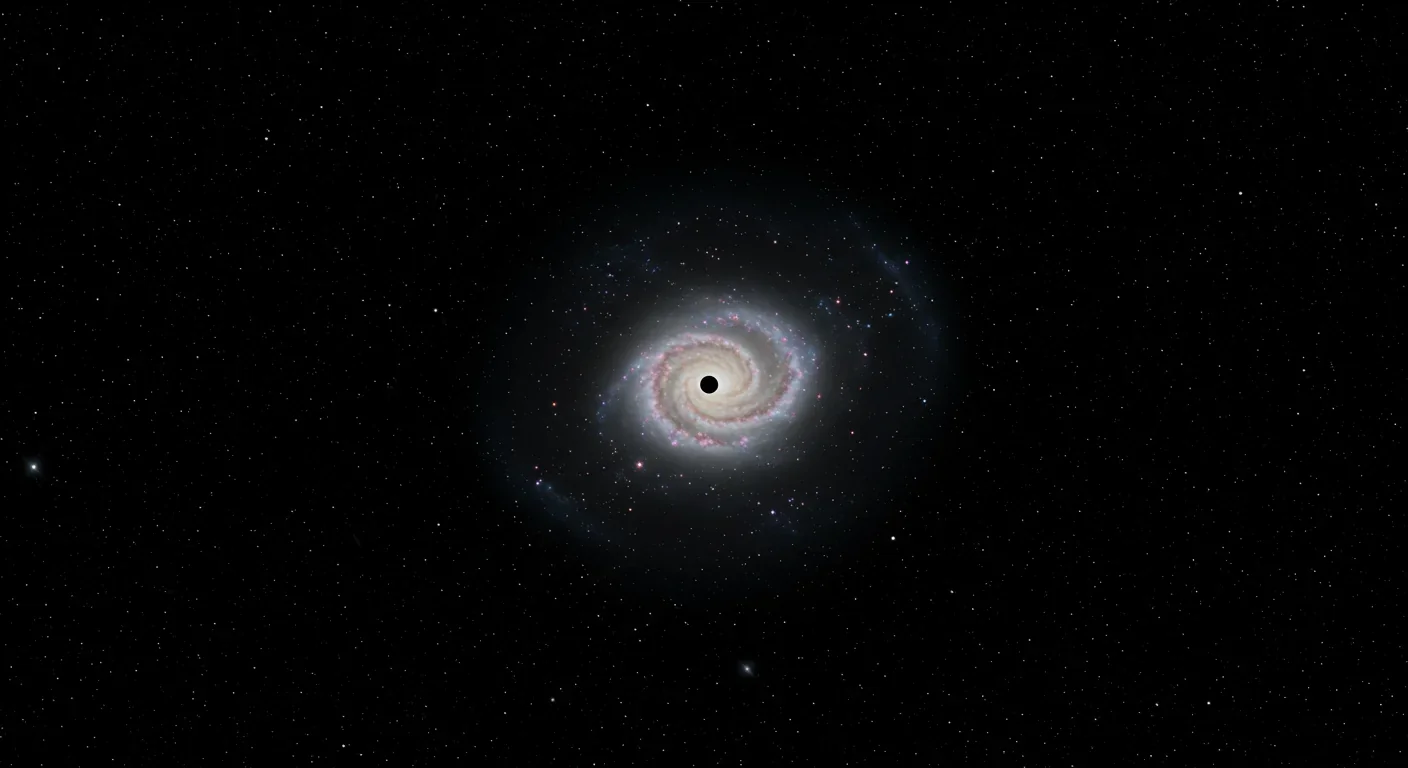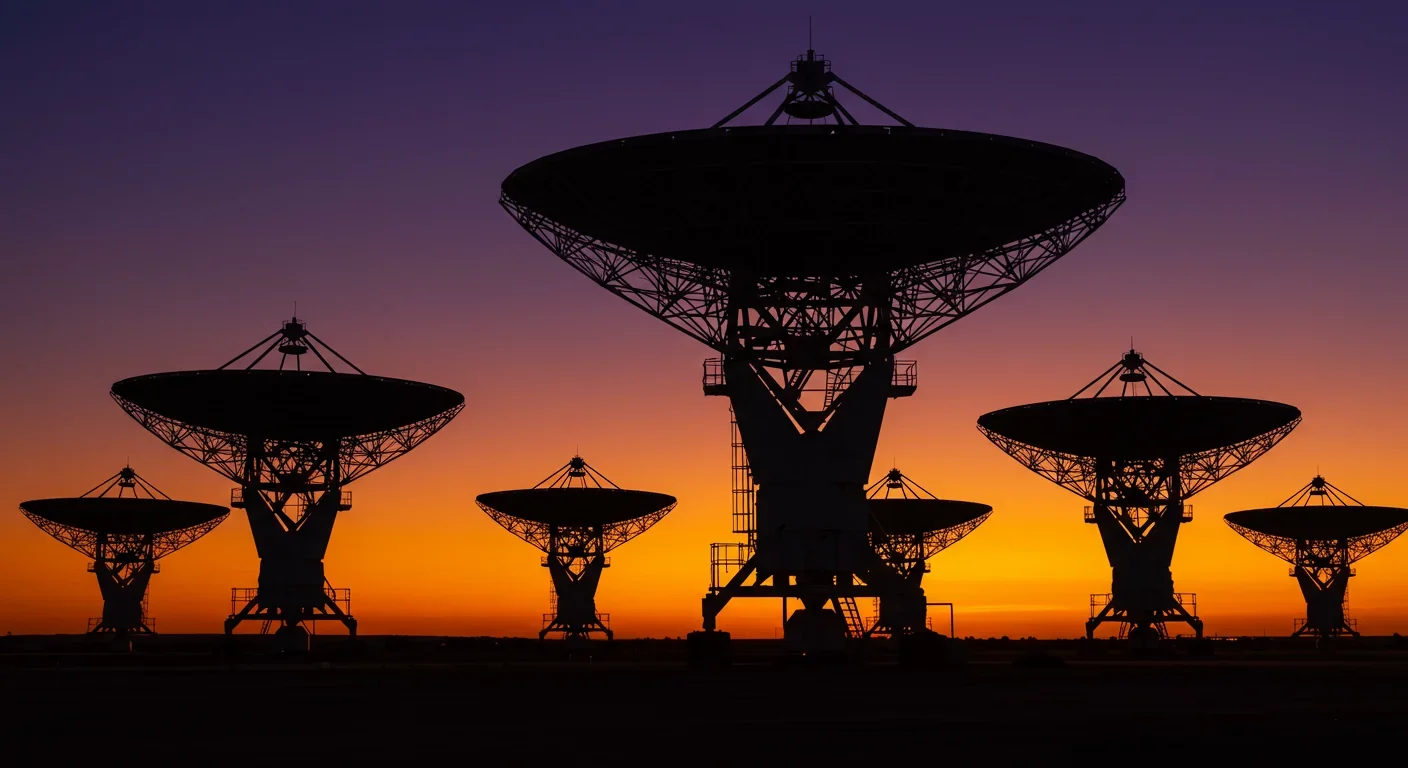The Gravity Heresy: MOND vs Dark Matter Theory Explained

TL;DR: Primordial black holes, formed in the Big Bang's first moments and smaller than atoms, could solve the dark matter mystery. New telescopes and gravitational wave detectors are closing in on proof.

For decades, physicists have been chasing ghosts. Dark matter makes up roughly 85% of all matter in the universe, yet we can't see it, touch it, or directly detect it. We know it's there because galaxies spin too fast to hold together without some invisible mass gluing them in place. Stars orbit galactic centers at speeds that should fling them into the cosmic void, but they don't. Something unseen is pulling the strings.
Enter primordial black holes, or PBHs. These aren't the supermassive monsters lurking at galaxy centers or the stellar-mass black holes formed from dying stars. We're talking about black holes smaller than atoms, some with masses comparable to asteroids, mountains, or even grains of sand, forged in the universe's first fraction of a second. If they exist, they could solve one of cosmology's most stubborn mysteries.
The idea sounds like science fiction: black holes the size of protons, created before the first stars ignited. But the physics checks out. In the chaotic first moments after the Big Bang, the universe wasn't the smooth, expanding soup we often imagine. Quantum fluctuations during cosmic inflation created density variations. In regions where matter compressed beyond a critical threshold, gravity took over before the universe had time to dilute the clump. Collapse. A black hole was born.
This formation window was incredibly narrow, likely occurring within the first second after the Big Bang. Unlike stellar black holes that need a dying star's core to collapse, primordial black holes formed from pure density without needing any star at all. They could range in mass from a fraction of a gram to thousands of solar masses, each one a relic from the universe's infancy.
Some PBHs might have masses around 10^15 grams (about the mass of a large asteroid) with a Schwarzschild radius smaller than an atomic nucleus. Others could be planetary-mass objects or even larger. The diversity makes them hard to pin down, but it also means they could explain dark matter across multiple scales.
Dark matter candidates have to meet strict criteria. They can't emit light. They must interact gravitationally but barely (if at all) through other forces. They need to be stable over billions of years. Primordial black holes tick every box.
Particle physicists have long favored WIMPs (Weakly Interacting Massive Particles) as the dark matter solution. Decades of experiments in underground labs have searched for these hypothetical particles colliding with ordinary matter. So far, nothing. The absence of WIMP detections has left the field increasingly desperate for alternatives.
PBHs offer a radically different approach because they're not exotic particles at all. They're just gravity, compressed to an extreme. They don't need new physics beyond Einstein's general relativity. This makes them simultaneously more conservative and more radical: conservative because we know black holes exist, radical because it suggests dark matter isn't a particle problem but a gravitational one.
The strongest argument for PBHs is their invisibility. A black hole with the mass of an asteroid but the size of a proton would pass through Earth undetected. It wouldn't scatter photons or leave traces in particle detectors. It would only betray its presence through gravitational effects, like bending light from distant stars or subtly altering the orbits of objects it passes near.
If PBHs are out there, how do we find them? The answer lies in gravitational lensing, a phenomenon predicted by Einstein. When a massive object passes between us and a distant star, its gravity bends the starlight, creating a temporary brightening. For a sub-atomic mass black hole, this brightening would last milliseconds to hours depending on the mass.
Over the past two decades, astronomers have monitored millions of stars in the Magellanic Clouds and the Milky Way's galactic bulge, searching for these telltale flickers. Surveys like MACHO, EROS, and OGLE have set stringent limits on PBH abundance. If primordial black holes in the mass range of 10^-7 to 10 solar masses made up all the dark matter, we'd have seen thousands of lensing events by now. We haven't.
The OGLE survey alone, based on 20 years of observations, has constrained PBHs in certain mass windows to contribute less than a few percent of total dark matter. This doesn't rule them out entirely, but it narrows the playing field. Smaller or larger PBHs could still evade detection.
Gravitational waves offer another search avenue. When black holes merge, they send ripples through spacetime that LIGO and Virgo detectors can measure. Some of the black hole mergers detected so far fall into a mass range that's hard to explain with stellar evolution alone. Could they be primordial? The jury's still out, but researchers are actively investigating whether merger signatures can distinguish PBHs from stellar-origin black holes.
The cosmic microwave background (CMB), the faint glow left over from the Big Bang, also holds clues. If PBHs were abundant in the early universe, they would have accreted matter and emitted radiation, leaving imprints on the CMB's temperature and polarization patterns. Recent studies analyzing the CMB's optical depth have tightened constraints on PBH abundance, ruling out some mass ranges but leaving others open.

Not all primordial black holes would survive to the present day. Stephen Hawking showed that black holes aren't entirely black. They emit thermal radiation, slowly losing mass over time. For supermassive black holes, this process is glacially slow, taking far longer than the universe's current age to evaporate. But for tiny PBHs, it's a different story.
A black hole with a mass less than about 10^15 grams would have evaporated completely by now, releasing a final burst of high-energy particles and gamma rays. Astronomers estimate there's a 90% chance of detecting an exploding black hole in the next decade if sub-atomic PBHs exist in sufficient numbers.
This creates a natural lower mass limit for dark matter PBHs. They need to be massive enough to have survived 13.8 billion years without evaporating. That means masses above roughly 10^15 grams, corresponding to asteroids or small moons compressed into quantum-scale volumes.
In early 2025, the James Webb Space Telescope delivered a jolt to the field. Deep images revealed a mysterious massive object in the early universe that some researchers believe could be a primordial black hole. If confirmed, it would upend our understanding of cosmic history.
The standard model of cosmology assumes supermassive black holes at galaxy centers grew gradually, fed by matter over billions of years. But JWST is finding supermassive black holes that appear far too early in cosmic time to have grown through conventional accretion. If these are primordial black holes that formed in the Big Bang's aftermath and then rapidly accumulated mass, it would solve a major puzzle.
However, caution is warranted. As cosmologist Peter Coles noted, the object might be something else entirely, a strange celestial body we don't yet understand. More observations and larger telescopes will be needed to settle the question. But the possibility alone has energized the field.
The quest to understand dark matter isn't just academic navel-gazing. Our entire cosmological framework rests on getting this right. If we're wrong about what makes up 85% of the universe's matter, then our models of galaxy formation, cosmic evolution, and the universe's ultimate fate are built on shaky ground.
Confirming PBHs as dark matter would also reshape our understanding of the Big Bang itself. It would mean the early universe was far more turbulent and structured than current models suggest. Those quantum fluctuations during inflation weren't just minor ripples but violent enough to create black holes. This has implications for theories of inflation, quantum gravity, and the fundamental nature of spacetime.
There's a philosophical dimension too. For decades, particle physicists have assumed dark matter must be a new type of particle, driving enormous experimental programs and theoretical frameworks. If dark matter turns out to be primordial black holes, it means we've been looking in the wrong place. The answer wasn't hiding in particle accelerators or deep underground detectors but in the gravitational archaeology of the cosmos.
Finding sub-atomic black holes requires pushing observational astronomy to its limits. Next-generation gravitational wave detectors like the Einstein Telescope and Cosmic Explorer will be far more sensitive than current instruments, capable of detecting lower-mass black holes and distinguishing primordial signatures from stellar ones.
Multi-wavelength surveys are scanning the sky for transient lensing events with unprecedented cadence and precision. By monitoring billions of stars simultaneously, astronomers hope to catch the fleeting gravitational signature of a passing PBH. These surveys require massive computational resources to sift through petabytes of data, identifying rare events against a background of cosmic noise.
Space-based telescopes like JWST and future missions will continue probing the early universe, searching for anomalous massive objects that shouldn't exist according to standard formation theories. Each new detection either tightens the constraints on PBHs or opens new possibilities.
There's even talk of using superradiance spectroscopy, a technique that exploits quantum effects around spinning black holes, to detect asteroid-mass PBHs through their interaction with ultralight fields. This would combine gravitational wave astronomy with particle physics in novel ways.

Despite progress, major questions remain unanswered. We don't know the exact mass distribution of PBHs, if they exist. Models of PBH formation predict different abundances depending on the details of inflation, phase transitions, and early universe dynamics. Some models predict mostly low-mass PBHs, others favor planetary or stellar masses, and still others suggest a broad distribution.
We also don't know if PBHs cluster together. If they're distributed uniformly like dark matter appears to be, they'd be harder to detect individually but easier to constrain statistically. If they cluster in dense regions, we might find them concentrated in galactic halos or even orbiting within our own solar system.
The connection to supermassive black holes remains speculative. Did tiny primordial black holes grow into the billion-solar-mass giants we see in distant quasars, or did those form through conventional means? The timeline is tight. Supermassive black holes appear within a few hundred million years of the Big Bang, leaving little time for gradual growth.
The next ten years will be decisive. Ongoing microlensing surveys will either detect convincing PBH candidates or rule out large swaths of parameter space. Gravitational wave detectors will come online with unprecedented sensitivity, potentially catching primordial black hole mergers. JWST and its successors will map the early universe in greater detail, revealing whether those enigmatic early objects are truly primordial.
If scientists detect an evaporating black hole, the gamma-ray burst and particle cascade would provide direct evidence of Hawking radiation, confirming theoretical predictions and pinning down the mass scale of the smallest surviving PBHs. That single observation could transform PBHs from speculative candidates to confirmed dark matter constituents.
Alternatively, mounting null results could push the field back toward particle dark matter or even more exotic explanations. Each constraint narrows the possibilities, forcing theorists to refine or abandon models.
What started as a theoretical curiosity in the 1970s has evolved into a serious contender for solving the dark matter puzzle. Primordial black holes challenge our assumptions about the early universe, particle physics, and the nature of dark matter itself. They remind us that the cosmos doesn't always conform to our expectations.
If these sub-atomic titans turn out to be real, they'll rewrite cosmology textbooks. We'll have to accept that the universe's dominant form of matter isn't a particle at all but a gravitational relic from the first moments of creation. We'll realize that the invisible scaffolding holding galaxies together is made of countless black holes, most smaller than atoms, drifting silently through space.
And perhaps most humbling, we'll understand that the answer to one of physics' greatest mysteries was hiding in plain sight all along, not in exotic new particles but in the elegant simplicity of Einstein's equations. The universe, it seems, still has a few tricks up its sleeve.

MOND proposes gravity changes at low accelerations, explaining galaxy rotation without dark matter. While it predicts thousands of galaxies correctly, it struggles with clusters and cosmology, keeping the dark matter debate alive.

Ultrafine pollution particles smaller than 100 nanometers can bypass the blood-brain barrier through the olfactory nerve and bloodstream, depositing in brain tissue where they trigger neuroinflammation linked to dementia and neurological disorders, yet remain completely unregulated by current air quality standards.

CAES stores excess renewable energy by compressing air in underground caverns, then releases it through turbines during peak demand. New advanced adiabatic systems achieve 70%+ efficiency, making this decades-old technology suddenly competitive for long-duration grid storage.

Our brains are hardwired to see patterns in randomness, causing the gambler's fallacy—the mistaken belief that past random events influence future probabilities. This cognitive bias costs people millions in casinos, investments, and daily decisions.

Forests operate as synchronized living systems with molecular clocks that coordinate metabolism from individual cells to entire ecosystems, creating rhythmic patterns that affect global carbon cycles and climate feedback loops.

Generation Z is the first cohort to come of age amid a polycrisis - interconnected global failures spanning climate, economy, democracy, and health. This cascading reality is fundamentally reshaping how young people think, plan their lives, and organize for change.

Zero-trust security eliminates implicit network trust by requiring continuous verification of every access request. Organizations are rapidly adopting this architecture to address cloud computing, remote work, and sophisticated threats that rendered perimeter defenses obsolete.